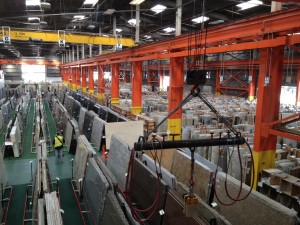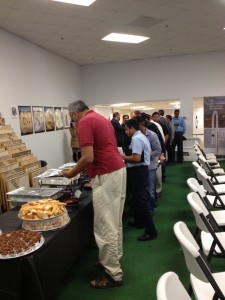We were one of the sponsors of the Marble Institute Stone Education Seminar in Orange, CA last week. Thanks to MS International for hosting. Here’s what I learned.
The morning was a presentation from Tony Malisani, of Malisani, Inc. in Great Falls, MT. The bulk of Tony’s talk was about pricing and profit. He described a good framework for thinking about how you price countertops.
Price Objectives
 First, it’s important to think about what you want to accomplish overall as a business. Having a mission statement, tactical plans, and knowing your target market and competition drastically influences how you want to set your prices.
First, it’s important to think about what you want to accomplish overall as a business. Having a mission statement, tactical plans, and knowing your target market and competition drastically influences how you want to set your prices.
If your goal is to have a high volume of low-end sales, you’ll end up with very different pricing than if you want to only build countertops for the highest-end customers.
Financial Considerations
If you sell your countertops for less than it costs to make them; in the long term, you’ll go out of business. So, it’s important to understand the financial components that go into your business to set your prices.
Cost is one of the biggest components, so it’s important to understand both your fixed costs, and variable cost. On top of that, any pricing model needs to account for margin, overhead, and of course… profit.
Pricing Strategies
One of the most popular pricing methods is competitive sq. ft. pricing. This is usually simple for the customer to understand, but not good for differentiation, and possibly bad for your overall profit.
If you work with kitchen & bath dealers, builders, or other wholesale customers you may be using “good, better, best” pricing that varies by market segment.
It’s also possible to show detailed pricing of each component with the hopes of encouraging upgrades. Having this detailed breakdown may mean that you need more skill as a salesperson, and producing quotes for your customers could be more involved.
And, it’s always possible to have a loss-leader or promotional price with the intention of capturing new markets. Once you’re established, it’s always possible to raise your prices.
Pricing experiments
Tony also suggested experimenting with your pricing for short periods of time to see what works. He described his single-most productive pricing experiment – for a period of 3 months, he made sure that every quote was returned to the customer by the next day. His close rate went up dramatically – to 80%.
Fabricator Forum

The each described some of their big mistakes, their unique traits, safety in the shop, and how they handle working with a variety of materials, including delicate natural stones, quartz, Vetrazzo, and even crystallized glass.
The thing that struck me about all of these successful fabricators was that they credit their teams as the number one reason for any success. Having employees who are proud of the product is the key to building a sustainable, profitable company.
Want to know more? At Moraware, we make software for countertop fabricators. CounterGo is countertop drawing and estimating software. JobTracker is scheduling software that helps you eliminate the time you waste looking for job folders. RemnantSwap is a free place to buy and sell granite remnants with fabricators near you.
